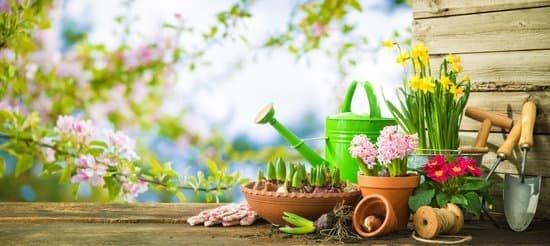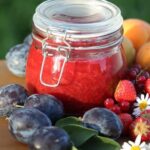Introduction
Northern California is known for its mild climate, perfect for gardening year round. With its Mediterranean climate and diverse terrain, winter and summer plant varieties may grow together in a single garden. From coastal fog to snow-covered mountains, the range of growing conditions from one end of Northern California to the other is unlike any other region in the world.
Despite being ideal for gardening, not all plants thrive in Northern California due to a number of challenges created by the local climate. The high temperatures and prolonged droughts that plague summers can be difficult for certain plants to overcome, while winter floods can damage perennial roots or drown seeds. Also, because of significant variation of climate between different counties and even cities, gardeners must adjust their strategies from place to place. The following guide will provide an overview of the best months to plant different species across Northern California so you can look forward to beautiful blooms across your garden throughout the year!
January
January is a great time to plan and purchase plants for your Northern California garden. It is best to select hardy plants that are suited for the region’s climate. Temperature fluctuations, changes in sunlight, and other factors should all be taken into account when selecting suitable varieties of fruits and vegetables. Trees, shrubs, and perennials should also be carefully researched before purchasing to ensure that they are well adapted to the area.
When bringing in new plants, it is important to check the roots and stems for any pests or diseases that may have been introduced with the plant. Look out for stunted growth or yellowing leaves. Quarantine any unfamiliar plants away from the existing ones until you can be certain they are disease-free.
It is also necessary to take precautions like covering young plants during cold nights or using planting beds of organic mulch or straw around newly set-in plants to protect from frosts during exceptionally cold winters. When necessary, use cloches over individual seedlings during January’s colder temperatures. Choose coverings made from soft materials such as cloth – avoid plastic as this will trap moisture leading to fungus occurring on foliage and stems due exposure to dampness.
February
February is an important month for gardening in Northern California. Many of the plants that hibernated over the rainy season start to put forth new sprouts and dormant flower buds, as the days grow longer and warmer. While this is a time of natural growth and abundance, it’s also important to take into consideration the reduced availability of water that comes with winter’s dry season. For many gardeners, this means finding creative solutions for conserving the precious resource while still allowing their gardens to thrive. One way to conserve water is by using mulch around garden beds. Mulch prevents weeds from growing and helps hold moisture in soil, which limits evaporation so your plants need less watering. Additionally, you can opt for more drought-tolerant varieties of plants or mix in native species that require less watering than typical ornamentals or fruit trees. For homes with irrigation systems, consider investing in automated systems that detect weather conditions to adjust their frequency and accuracy of water flow, ensuring no unnecessary waste. As always, be mindful of local water rules and regulations when tending to your landscape.
March
March can be an exciting month for Northern California Gardening. As the day length increases and temperatures rise, it’s time to start thinking about your summer garden.
Start with a soil test to get a snapshot of the levels of nutrients in the soil. Revisit your plans from last year, taking into account how those plants actually performed in your climate. Research new varieties that may perform better in Northern California and order seeds to be planted later on in the season. Get all your tools ready; sharpen and clean as necessary, fix any broken products, and invest in some new items if needed.
Next create planting beds with raised beds or a more traditional row system. This is also the best time to apply compost or manure before adding fertilizer and seeding or transplanting starts. Do not apply quick release nitrogen fertilizer, as this can damage spring seedlings or established plants, but use slow releases or organic fertilizers instead – these are just as effective but safer for your plants! Don’t forget about weed control – mulching will help reduce weeds and conserve moisture around perennials, trees and shrubs alike.
In March prune away winterkill before new growth begins on Perennials deciduous trees & shrubs & fruit trees. After pruning fertilize perennial flower beds & vegetable gardens to give them a boost before they start producing again.. Start hardening off seedlings such as tomatoes and peppers before you transplant them outside in early April when the frost date has passed. Make sure you water regularly so newly transplanted vegetation won’t dry out too much during their first days outside! Finally, start sowing cool-season vegetables like lettuce, arugula, radishes, peas & spinach which thrive during cooler spring temperatures
April
April is the perfect time to begin planting vegetables and fruits in Northern California gardens. The state’s mild climate means the ground can be worked earlier than in many other parts of the country. Most vegetables and fruits can be planted any time of year, but some fare better if started early in the season. Popular springtime crops include carrots, peas, beets, lettuce, spinach, kale and Swiss chard, as well as radishes. Fruits to look out for during April include strawberries, blackberries, raspberries, blueberries and citrus fruits like lemons and oranges. When picking varieties or individual plants to start your garden with focus on those that have been grown specifically for a Northern California climate, this will ensure you get quality produce. Additionally many nurseries carry varieties that are prone to diseases or insect damage; these should generally be avoided.
May
As the warm weather of May starts to settle into Northern California, it’s time to start watering your garden deeply and consistently. Deep watering is the optimal form of watering for plants in this climate because it nourishes roots and encourages strong growth. During this month, you should be deep watering your garden 1-2 times per week, and checking to ensure that the soil is staying moist but not overly saturated.
To determine if a plant needs water, check the moisture level by putting your finger into the soil up to 2 inches deep. If it is dry or barely damp, that means it’s time to water. When deep watering, slowly pour water onto the soil around each plant until it has penetrated several inches down—you should use enough force that you can see and hear the water going through. Avoid using a sprinkler or shallow irrigation systems since they don’t penetrate deeply enough into the soil. You should also avoid wetting plant foliage while deep watering since this can lead to fungal diseases.
In addition to making sure your garden has ample water during this month, you may also want to consider mulching around all of your plants with organic material like grass clippings or leaves. This will help maintain moisture levels in between deep waterings and provide better insulation for more delicate plants when temperatures dip in June and July.. Additionally, some herbaceous plants may begin setting buds at this time—if so, remove them from the stem so that their energy can go back into encouraging more leafy growth before flowering season comes in June.
June
June is an important month for protecting your garden from common insect pests and diseases. The most common insects to watch out for are aphids, spider mites, whiteflies, caterpillars, thrips, leafminers, beetles, borers and plant bugs. Check plants regularly for signs of infestation such as leaves that have been eaten or crawling insects on the stems. Most insects can be treated with a spray that contains natural ingredients like pyrethrum or neem oil. If needed, use a broad-spectrum pesticide such as Rotenone or Spinosad to treat larger infestations. Diseases such as powdery mildew, downy mildew and blight can also occur in Northern California gardens. To keep them from spreading throughout the garden it’s important to thin overcrowded foliage, remove infected plants and water carefully so only leaves and not flowers get wet. A light application of sulfur dust or a fungicide containing copper may help control specific diseases in the early stages of growth before they become too serious to manage without major intervention.
July
July in Northern California can be hot and dry, making gardening difficult. During this month, it is important to take precautions to protect your garden from the excessive heat that can cause stress and damage plants.
Watering during this period should be done infrequently but deeply to ensure the water reaches the roots of all plants. Using mulches like straw or bark will also help soil retain moisture and keep plants cool. Water-wise plants like rockrose, ice plant, and lavender thrive in hot weather and require little water even during droughts.
Additionally, it is advisable to move any sensitive plants that cannot handle extreme heat into shady areas of your yard. Pruning can also be beneficial as it encourages growth of new leaves which are better equipped to handle temperatures. Take advantage of those cool summer mornings by getting out into the garden early and completing tasks such as weeding, fertilizing, harvesting produce, or planting more hardy plants such as tomatoes while the temperatures are still low.
August
Organic garden products are becoming increasingly popular in Northern California. They offer a number of advantages over their traditional chemical alternatives, such as being better for the environment. In August, maintain and build healthy soil with microbial inoculants and organic fertilizers to reduce runoff and keep nutrients cycling in the soil. Boost nitrogen levels with compost tea that can be made by steeping gypsum-coated manure or worm castings in water. Mulch will keep weeds away, improve water retention in sandy or clay soils and slow down evaporation from moist soils. This will also help add organic matter to your soil which attracts beneficial insect predators like ground beetles and minimizes weed seeds. Use caution when applying compost tea because it is an incredibly potent liquid fertilizer which could damage new plants if used too heavily. Aim for a regular watering schedule, preferably first thing in the morning when temperatures are milder and insects less active. To ensure consistent hydration use a soaker hose system which slowly trickles water directly onto the soil rather than splashing onto leaves and flowers.
September
September is the ideal time to evaluate the quality of soil in your garden. It is particularly important in Northern California, where clay soils can be common. Clay soils are prone to compaction, which prevents air and water from reaching plant roots. Excessively compacted soil also reduces biodiversity, leading to fewer renewable resources such as earthworms and beneficial fungi.
Evaluating the soil’s quality and compaction is an important part of ensuring that plants have all of their needs met. You can do this by taking a sample of your garden soil and examining it for texture or firmedness when wet. A general rule of thumb is that healthy soil should crumble easily with one’s fingers when moistened while compacted materials should barely move. Additionally, you can check for signs of life in the soil such as earthworm casts, fungal hyphae, or tiny mites. If none of these indicators are present then there might be an issue with compaction and lack of aeration that could benefit from loosening or aerating treatment.
October
As October arrives in Northern California, the nights become cooler and the days begin to get shorter. As a gardener, this is the perfect time of year to make some seasonal additions to your garden. Begin by planting traditional fall vegetables such as cabbage, kale, root vegetables like radishes, carrots, and beets; plus broccoli and cauliflower. Also consider planting some herbs like oregano, thyme and rosemary. Consider adding colorful pansies or mums to have a more attractive display in addition to your vegetable garden.
To finish off your fall display you can include outdoor decorations such as wreaths hanging from your fence or gate that are made with autumn leaves and stems of cattails and dried flowers. Pumpkins also look great when arranged along walkways or on each side of steps leading up to the front door. And don’t forget some edible decorations such as baskets of orange persimmons or bunches of pomegranates arranged on your counters or front porch area! With a little effort you can create a festive atmosphere for you to enjoy all season long!
November
In Northern California, November marks the transition from autumn to winter. As temperatures continue to drop, the frost outside can damage many of the more delicate plants in the garden. It is important to assess your individual garden for its frost tolerance so that you can plan accordingly. Before preparing for extreme cold weather, make sure to check the weather forecast for any warnings about unusually low temperatures or other extreme weather events.
For vegetables and flowers that require a moderate temperature range to thrive, consider using protective covers like plastic tarps or row cover cloths so they are protected from unexpected frosts. You can also employ methods such as double potting—planting each plant into two pots and then keeping them close together when temperatures become too extreme—to shelter multiple plants at once. If freezing conditions persist and your space permits it, use heat lamps or trellising to make an insulated bubble of warmth around certain varieties of plants. Finally, protect colder-season vegetables such as kale with organic mulch products that will help retain moisture and block out wind chill.
December
For gardeners in the Northern California region, December marks the end of an extended harvest period. This is a prime time to be harvesting and storing your seasonal favorites for later use. Here are a few helpful tips for gathering your produce during this month:
-If you’re growing winter vegetables such as turnips, beets, and cabbage—harvest them as soon as they’re ready! These cool-weather veggies can survive frost and snowfall with minimal damage if harvested at their prime maturity.
-December is also the ideal time for collecting seeds from plant varieties you may want to save for next year’s planting season. Gather those dry pods of peas, peppers, beans, and squash before the coldest winter days arrive.
– Some citrus fruits can successfully withstand cold northern weather while still remaining on the tree throughout the season; however, it’s best to pick these fruits when they’re just ripe in mid-December so you can extend their shelf life indoors.
-In order to get the most out of your backyard bounty, find space on shelves or in pantries to store root vegetables like carrots or potatoes. Place them in cardboard boxes or paper bags that have been lined with paper towels (for absorbency). Store fruits such as apples or pears in plastic bags that have had holes punched through them to promote increased air flow (which will slow down oxidation). Any fresh produce that you don’t plan on consuming soon should either be dehydrated or frozen for prolonged storage life.
Conclusion
In conclusion, gardening in Northern California can bring great rewards with proper planning, organization, and implementation. It is important to keep sustainability in mind when creating a garden plan. Utilizing eco-friendly practices that conserve resources and encourage tree growth can lead to a bountiful harvest over time. As the seasons roll by, gardening enthusiasts in Northern California should make sure to take care of their plants, spread out their tasks throughout the season, remain aware of common pests and diseases, and be mindful of weather patterns in order to maximize success. Finally, at the end of all the hard work put into your garden, sit back, relax and enjoy the fruits of your labour!

Welcome to my gardening blog! I am passionate about plants and enjoy sharing my knowledge and experiences with others. In this blog, I will write about everything related to gardening, from tips on how to get started to updates on my own garden projects.





